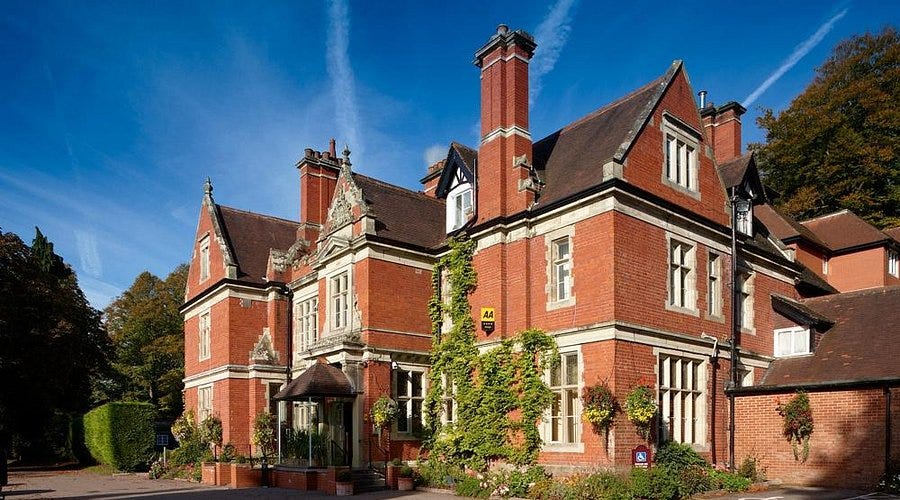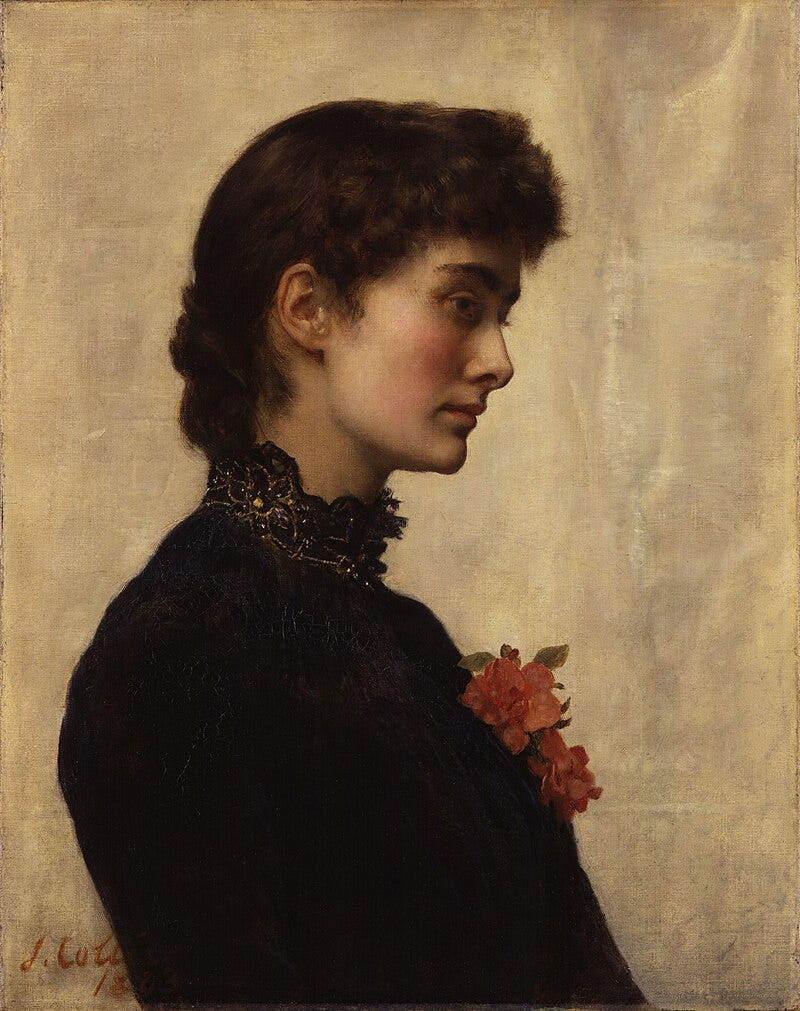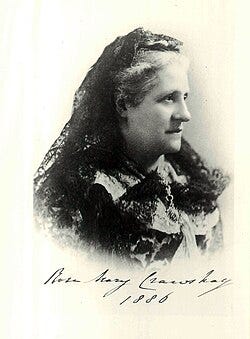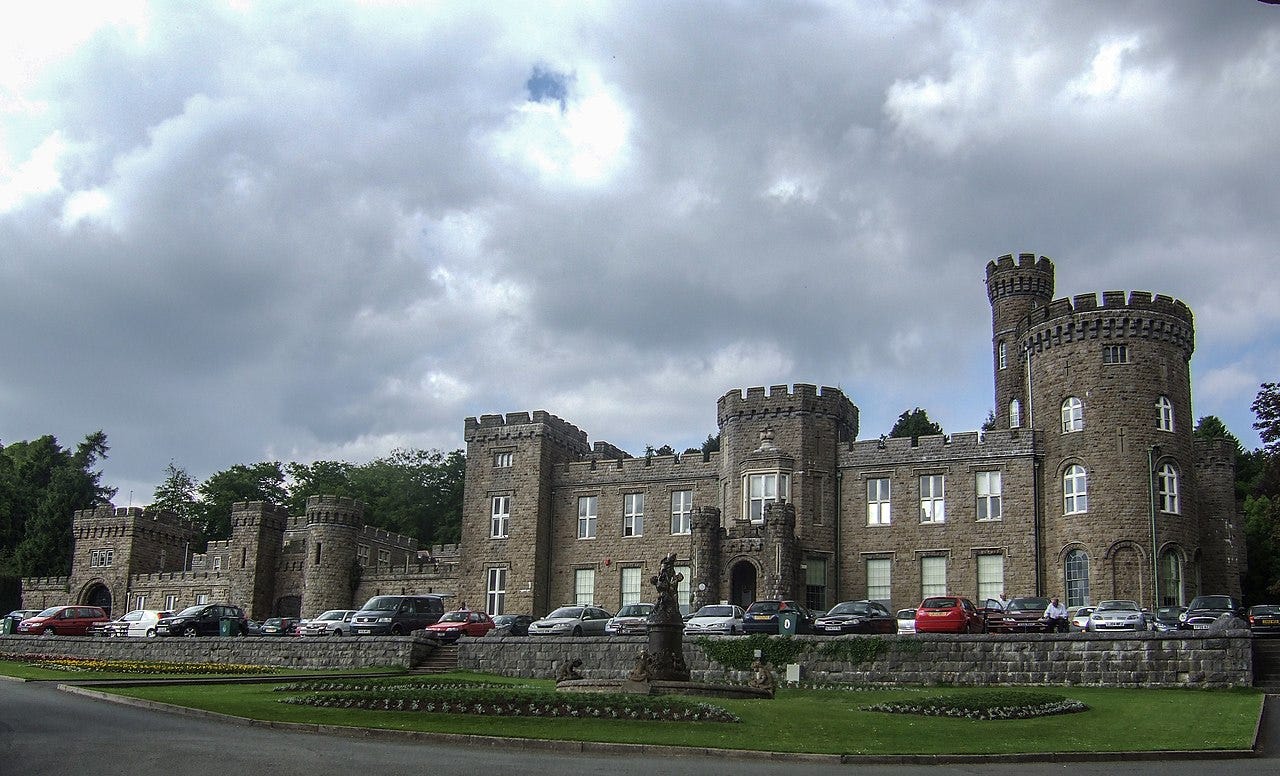When your whole life is a Rosamond Lehmann novel!
And how Jill Greenwood survived...Part One
Archives are such a lottery. Sometimes I spend hours in a library desperately flicking through faded or illegible pages, or reams of information that have no bearing at all on my subject, or simply a stack of basically empty boxes. But every now and then I strike gold. I arrived at the Bodleian Library in Oxford last week with very low expectations: Tony Greenwood is not the most famous member of Harold Wilson’s Cabinet, his papers are only a subset of those of his father Arthur Greenwood, who was an early Labour Party pioneer, and Tony’s wife Jill was right at the end of the catalogue under ‘misc. personal papers.’ So just imagine how I felt when I opened the first box and found probably 150 pages of typed, hand-corrected ‘memoir’.
And what a memoir! I have recently been re-reading that classic chronicler of the 1920s and ‘30s English upper-middle classes, Rosamond Lehmann, with her tales of romance, affairs, sex scandals and snobbery. It seems to me that Gillian Greenwood lived it in real life, with hints of incest and sexual abuse thrown in for good measure. Yet by the time she was thirty she was in a happy second marriage and had established herself as a leading window dresser for one of the top fashion houses in London. This is going to be a story in two parts. We could start where she does, at the age of five, on her way to stay with the grandmother at Coed-y-Mwstwr. But in fact her origins make several stories of their own.
Gillian Crawshay-Williams was the great grand-daughter of Thomas Huxley, the zoologist. Her grandmother, Marian, was Huxley’s daughter, who trained as an artist and married the Pre-Raphaelite painter, John Collier in 1879. It is a tragic story - their only child Joyce was born in 1884, but Marian suffered from severe post-natal depression, and died of pneumonia in Paris in 1887 while undergoing treatment. Little Joyce, Gillian’s mother, was only three. Collier married again - to his first wife’s younger sister, Ethel. The marriage had to take place abroad as marrying one’s dead wife’s sister was illegal in England. This is the step-grandparent that Gillian would later refer to as ‘the granddragon’.
Joyce Collier followed in her parents’ footsteps and worked as an artist, mostly working on miniature portraits. In 1906 she married Leslie Crawshay-Williams, the heir to a wealthy family in Wales who had made their money in iron foundries. The grandmother who lived at Coed-y-Mwstyr was Rose Crawshay-Williams (1848-1943), and she was the daughter of this extraordinary woman, Rose Mary Crawshay.
Rose Mary Crawshay (1828-1907) was a well-loved philanthropist and suffragist, and the mistress of this magnificent pile, Cyfarthfa Castle, near Methyr Tydfill.
Rose deserves her own Substack, but suffice it to say that she commissioned and built seven free libraries, endowed a non-fiction prize for women, campaigned for the reform of divorce laws, helped found Swansea Training College for women teachers and was a member of the National Society for Women’s Suffrage. When her great-granddaughter Gillian was establishing herself in her career in fashion at Jaeger, she used the name ‘Crawshay’, and I very much hope that it was in honour of her illustrious ancestor.
Leslie Crawshay-Williams seems to have struggled with life. He married Joyce Collier in 1906 and they had two children, Rupert born in 1908, and Gillian in 1910, but the marriage was not happy. He worked in the motor trade, and mixed with motor engineers and racing drivers. At the time of the First World war he was travelling in America on business when his wife left him for a motor salesman (and alcoholic) with the splendid name of Drysdale Kilburn - a man he had invited to live in his house because he felt sorry for him. As Gillian remembered
The day my mother ran away with the handsome young man my father had so unwisely invited to live with us, Rupert and I were left alone in the house, having been told by the very young and irresponsible maid not to answer the door because of course she should not have left us alone in the house and she was afraid of being found out. A soldier in scarlet took her out.
It is not clear how long these two children, seven and five, were left alone, but Gillian remembered being hungry and that all they could find to eat was a tin of black treacle. The Granddragon, Ethel Collier, arrived to rescue them and their father was sent for. After a week their mother Joyce, presumably full of remorse, returned but the children would have nothing to do with her. Rupert locked himself in the lavatory after kicking her, and Gillian hid in the garden. They were eventually taken in by the Marillier family who lived next door at 37 St Johns Wood Park. But every summer they were despatched by train to Coed-y-Mwstyr with their governess and their two boy cousins to spend summer with Granny Rose and Uncle Elliot. Gillian’s memoir is full of glorious tales of these endless Welsh summers, the packed lunches of corned beef sandwiches, hard boiled eggs, bottles of tonic water and pieces of chocolate. The tennis and croquet on the lawns. Picnics on the beach. Beautiful gardens and wanders in the wood. Being chauffeured around by Floyd in the Delaunay Belleville. It could all have been so idyllic, so like the summers in a Rosamond Lehmann novel, if it hadn’t been for Uncle Elliot…
Elliot could have had a glittering career - if only he could have kept his trousers buttoned. Wikipedia notes that he was educated at Eton and Trinity College, Oxford. he joined the army and by 1902 had reached the rank of Lieutenant. He joined the Liberal Party, worked for Winston Churchill at the Colonial Office, was elected MP for Leicester in 1910 and served as Parliamentary Private Secretary to Lloyd George. But it all came crashing down in 1913 when he was cited as co-respondent in a divorce case by his best friend, an event which he recognised as ‘the death blow of my career’. He served with honour in the First World War, and thereafter earned some credit as an author and playwright. The scandals continued, however, despite two marriages and two children. Gillian claimed that at one point he was accused of having seduced his wife’s half-sister, when she was only twelve. His reputation was so bad locally that the Crawshay-Williamses were ostracised by the neighbouring families and had to make their own amusements. ‘I think that Elliot seduced all our governesses except one.’ This was despite very severe warnings being given to them by the children’s foster mother before they left London for Wales:
Rupert and I used to listen at the door and according to the would-be governess’s reaction to Mim’s warnings about our Uncle Elliot if she said ‘I am capable of looking after myself’ we gave her twenty-four hours. If she said ‘oh dear’ and seemed nervous we gave her forty-eight hours before she fell under his spell.
Gillian claimed that Elliot even had a go at seducing her, when she was about seventeen, on the beach at Ogmore. She fought him off, but ‘all the way home he argued with me saying that I was certain to have a lover one day so why not let him be my teacher.’
What Gillian was not telling anyone, was that this was not her first encounter with incestuous male behaviour. Her stepfather Drysdale had been sexually molesting her whenever the rest of the family was out of the house, certainly until she turned fourteen. She never discussed this with her ‘bad-tempered mother’ with whom her relationship had not improved. Her closest relationship was with her adored father, Leslie, who continued to lose money with alarming regularity in doomed speculations and schemes. The most tragic of these failed in front of Gillian’s eyes on the beach at Porthcawl. Leslie had built a prototype of a new sports car, ‘a magnificent white car with shiny brass lamps and trim’, it had an automatic gear box and a low slung chassis, and Leslie was negotiating to sell the design to Daimler. But the sands shifted and his car was dragged down the beach and sank. Even the local farmer with his carthorse was not able to pull it out and the horse had to be cut free. Gillian said it was the only time she saw her father cry.
As was often the case with children of broken homes, Gillian was sent away to boarding school, but at the age of just seven she was the youngest boarder Chantry Mount School in Bishop’s Stortford had ever seen. She stayed there for ten years, not excelling academically, but at five foot nine inches tall she became a strong sportswoman. Her father identified that she also had artistic talent. He paid for her to take extra drawing lessons and opened an account at Reeves’, the artist supplies company. ‘I shall never forget the excitement of getting their catalogue and choosing one sable brush and even more thrilling undoing the parcel when the brush or tube of paint or sketchbook arrived.’ She was head girl, but the principal thrill was being allowed to design the stage sets for school productions.
I could say that ‘the stage was set for her future career’. In the next part I will be introducing Gillian’s two marriages, her career at Jaeger, and her role in World War Two.











Fascinating. Can't wait for the second part. We always think of people in the deep past as prim and proper when they were not.
This is like lifting the paving slab of early 20th century morality and seeing all the little creatures scuttling about. What lives! Thank you Sarah - can’t wait for Part 2.